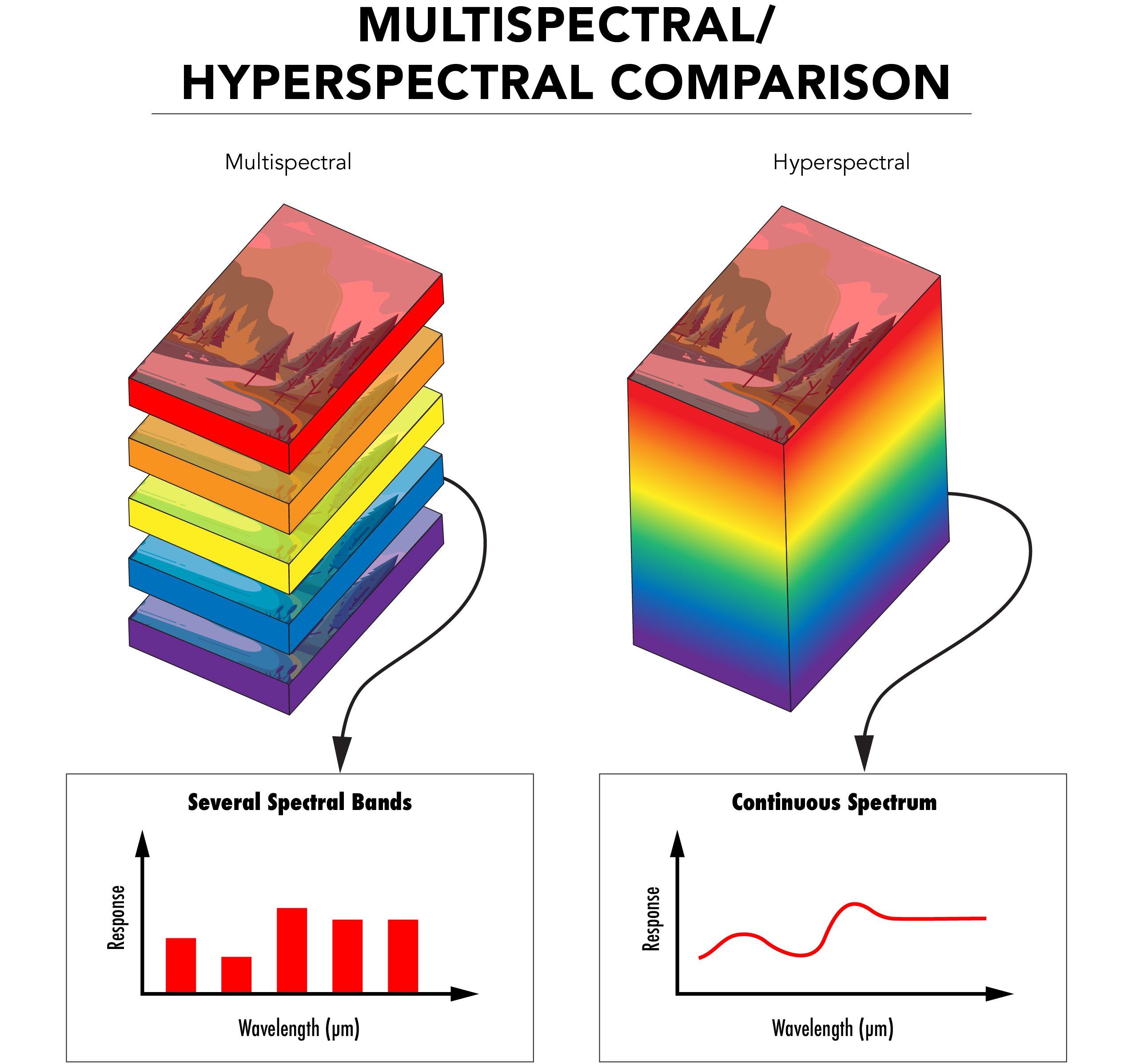Contents

Source: Edmund Optics
Understanding Multispectral Imaging: Principles and Applications

Introduction to Multispectral Imaging
Multispectral imaging is a sophisticated technique that involves capturing images across multiple spectral bands. Unlike traditional photography which typically uses three overlapping color channels (red, green, blue), multispectral imaging can capture images in numerous spectral bands, often extending beyond the visible spectrum into the infrared and ultraviolet regions. This capability enables the detection of details that are not visible to the naked eye, making it invaluable in various scientific and industrial applications.
Principles of Multispectral Imaging
Multispectral Image Sensors
Multispectral image sensors are designed to capture images in multiple spectral bands. These sensors typically contain several photodetectors per pixel, each sensitive to a specific wavelength range. While this setup simplifies the optical design, it requires specialized sensors tailored to the desired spectral channels. A limitation of this approach is the potential loss of sensitivity, as each photodetector only captures light within its specific band, discarding other wavelengths.
Multispectral Wheel Cameras
Another approach to multispectral imaging involves using a multispectral wheel with a conventional camera. This wheel contains a series of optical bandpass filters that can be rotated to select different wavelength regions. This method offers flexibility, allowing users to choose filters based on their specific needs. The wheel can be controlled manually or via computer, facilitating easy adaptation to various applications.
Combination of Cameras
In some setups, multiple cameras are used, each optimized for a particular spectral range. For instance, one camera might capture visible light while another captures infrared wavelengths. This setup allows for optimized performance across different spectral regions, although it requires careful alignment to ensure spatial overlap of the images from different cameras.
Scanning Instruments
Scanning instruments, commonly used in hyperspectral imaging, capture image data by scanning across a scene. A typical setup involves using an optical slit to select image data along a line, with a dispersive element spreading the light into its spectral components. By moving the slit or the object, a complete image can be constructed. This method is particularly effective for capturing large areas, such as those observed from satellites or airplanes.
Applications of Multispectral Imaging
Earth Monitoring
Multispectral imaging is extensively used in Earth observation from satellites. It supports geological surveys, environmental monitoring, and military surveillance. By using different spectral channels, it is possible to monitor vegetation health, detect minerals, and identify unauthorized land use or infrastructure developments.
Agricultural Monitoring
In agriculture, multispectral imaging is employed to monitor crop health and development. Drones equipped with multispectral cameras can provide high-resolution images that help farmers make informed decisions about irrigation, fertilization, and pest control.
Medical Diagnostics
In the medical field, multispectral imaging aids in diagnostics by providing detailed images of skin and other tissues. This technology can help in early detection of diseases by highlighting abnormalities that are not visible in standard imaging techniques.
Colorimetry and Authentication
Multispectral imaging is also used in colorimetry to obtain more precise color measurements than those provided by standard RGB imaging. Additionally, it can be used for authentication purposes, as objects with unique spectral signatures can be identified and verified, preventing counterfeiting.
Conclusion
Multispectral imaging is a powerful tool that extends the capabilities of traditional imaging techniques. By capturing data across multiple spectral bands, it provides insights that are critical in fields ranging from environmental science to medical diagnostics. As technology advances, the applications of multispectral imaging are likely to expand, offering new possibilities for innovation and discovery.

Source: Wikipedia
Feel free to comment your thoughts.



